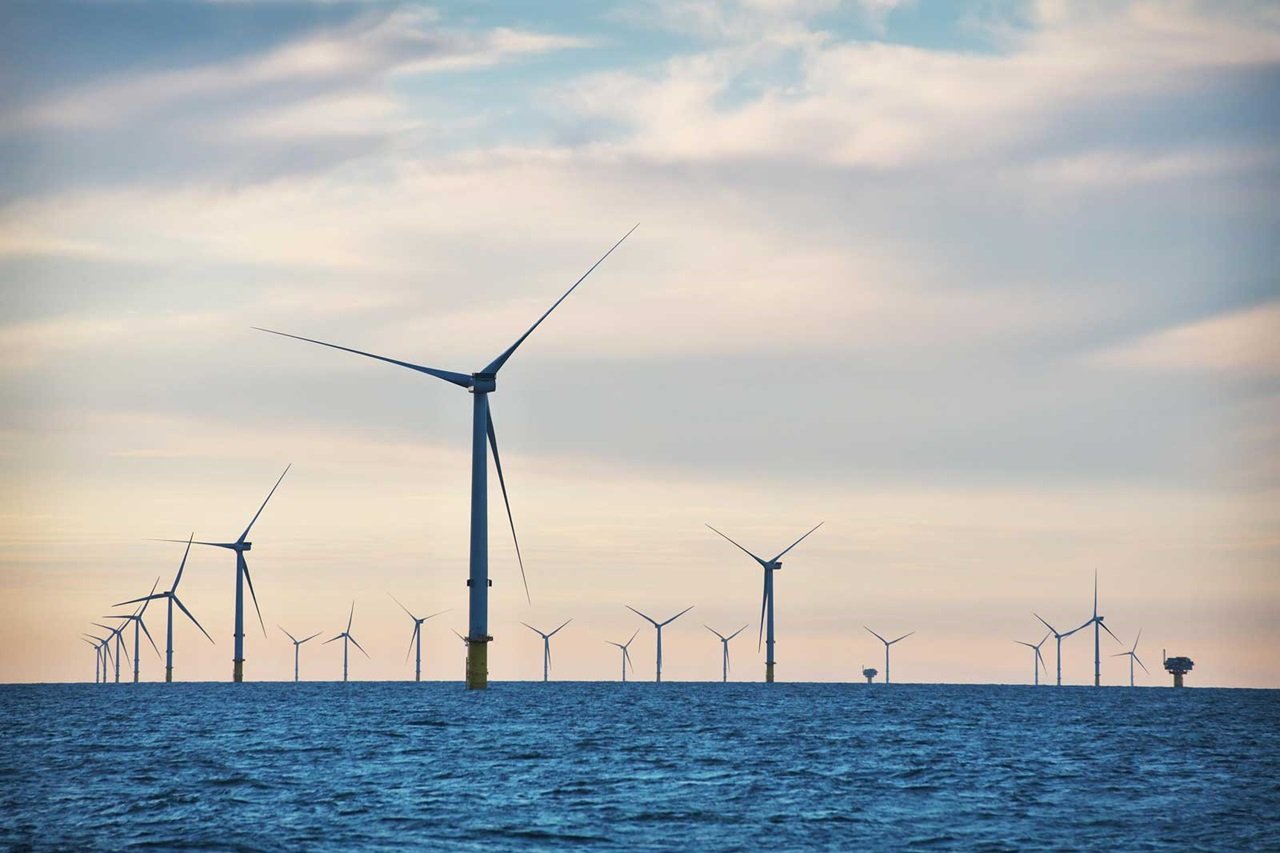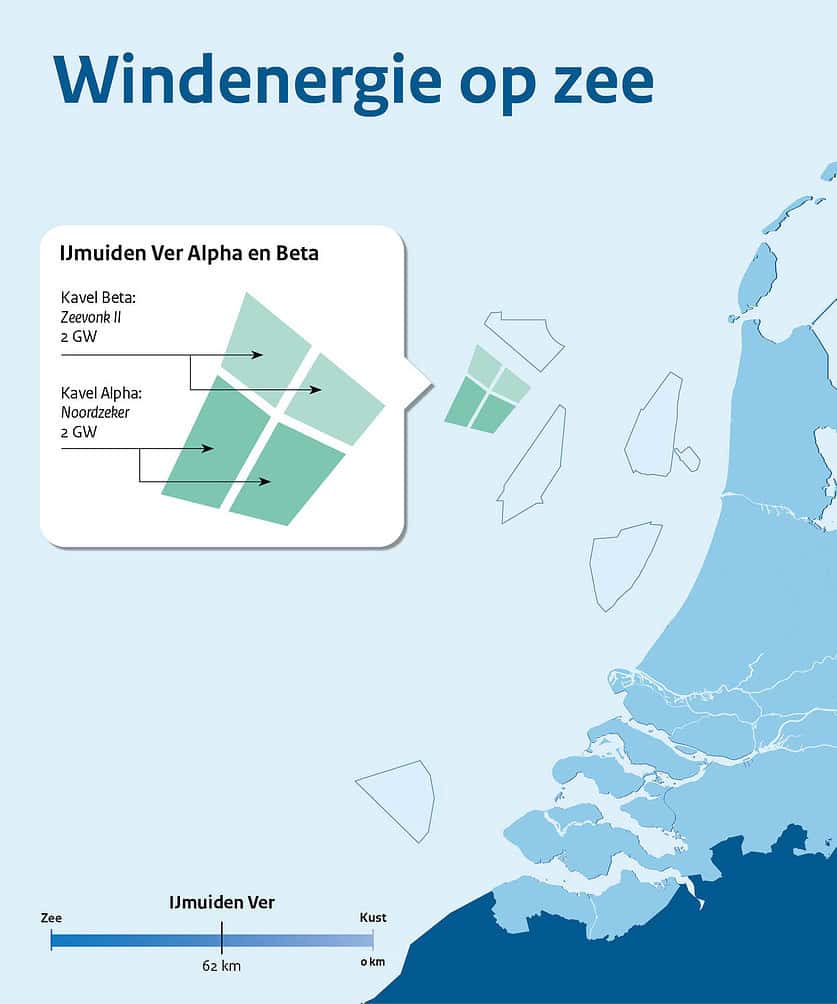
The largest licensing round for offshore wind farms in the Netherlands to date has been successfully completed. Noordzeker, a consortium of ABP, APG, and SSE Renewables, is the permit winner for IJmuiden Ver wind farm, Lot Alpha. The focus here is on strengthening the nature of the North Sea. Zeevonk II, a joint venture of Vattenfall and Copenhagen Infrastructure Partners (CIP) is the winner of IJmuiden Ver, lot Beta. This wind farm focuses on the smart integration of the wind farm into the energy system. The two wind farms will produce renewable electricity and each will have a capacity of at least two gigawatts. The wind farms are expected to be producing energy in 2029.
Why do you need to know this?
A stable power supply is an essential aspect of the energy transition we are currently experiencing. The two new wind farms will make a crucial contribution.
The wind energy areas are about 62 kilometers off the coast and will be connected to the offshore power grid via 2 platforms connected to land. The electricity from lot Alpha will land at Borssele, and the electricity from lot Beta will land at the Maasvlakte. The construction of these wind farms marks another major step in increasing the Netherlands’ energy independence and sustainability. Together, these wind farms account for about 14% of the total current electricity consumption in the Netherlands.
Minister Jetten (Climate and Energy): “Noordzeker and Zeevonk II have great plans for these new offshore wind farms. It shows that wind farms and nature can go well together, and that offshore wind can help reduce pressure on the onshore power grid with smart solutions. Market conditions have become more complicated, so I am happy that these parties want to build the offshore wind farms!”
Strengthening nature in the North Sea
The wind farm in IJmuiden Ver lot Alpha aims to contribute to the restoration and strengthening of North Sea nature. Noordzeker’s plans include turbine and wind farm designs that contribute to the protection of birds, as well as measures that will significantly reduce the disturbance of marine mammals during the construction and operation period. Also, Noordzeker will install several artificial reefs at over 75% of the turbines. In addition, Noordzeker will build a living laboratory to demonstrate how wind farms can help combat climate change. Noordzeker has made a financial bid of over €1 million annually, which Noordzeker will pay annually throughout the 40-year permit term. Noordzeker is also paying the costs of the environmental impact assessments and site studies, which amount to about €20 million.

Integration into the onshore energy system
The design of the IJmuiden Ver lot Beta wind farm aims to better integrate the generated electricity into the energy system and avoid overloading the onshore power grid. Zeevonk II will build an electrolyzer (hydrogen plant) with a capacity of 1 gigawatt in the port of Rotterdam. Because electricity from the wind farm will come ashore at the Maasvlakte and the electrolyzer will be built nearby, the electricity will not have to go further into the power grid first. This relieves pressure on the power grid. Zeevonk II has made a financial offer of €20 million per year for 40 years. Zeevonk II also pays the costs of the environmental impact assessments and site studies in the amount of about €20 million.
With the licensing of these two mega wind farms, planning is not yet complete. The permit applications for the next tenders for lots IJmuiden Ver Gamma and Nederwiek I (4 gigawatts together) will also be assessed based on a comparative test with financial bids. At the end of the 3rd quarter of 2025, wind farm developers can submit a permit application for these wind farms. These wind farms are part of the plans to realize 21 gigawatts of offshore wind energy by 2032. These 21 gigawatts will require about 4.4% of the Dutch part of the North Sea.

